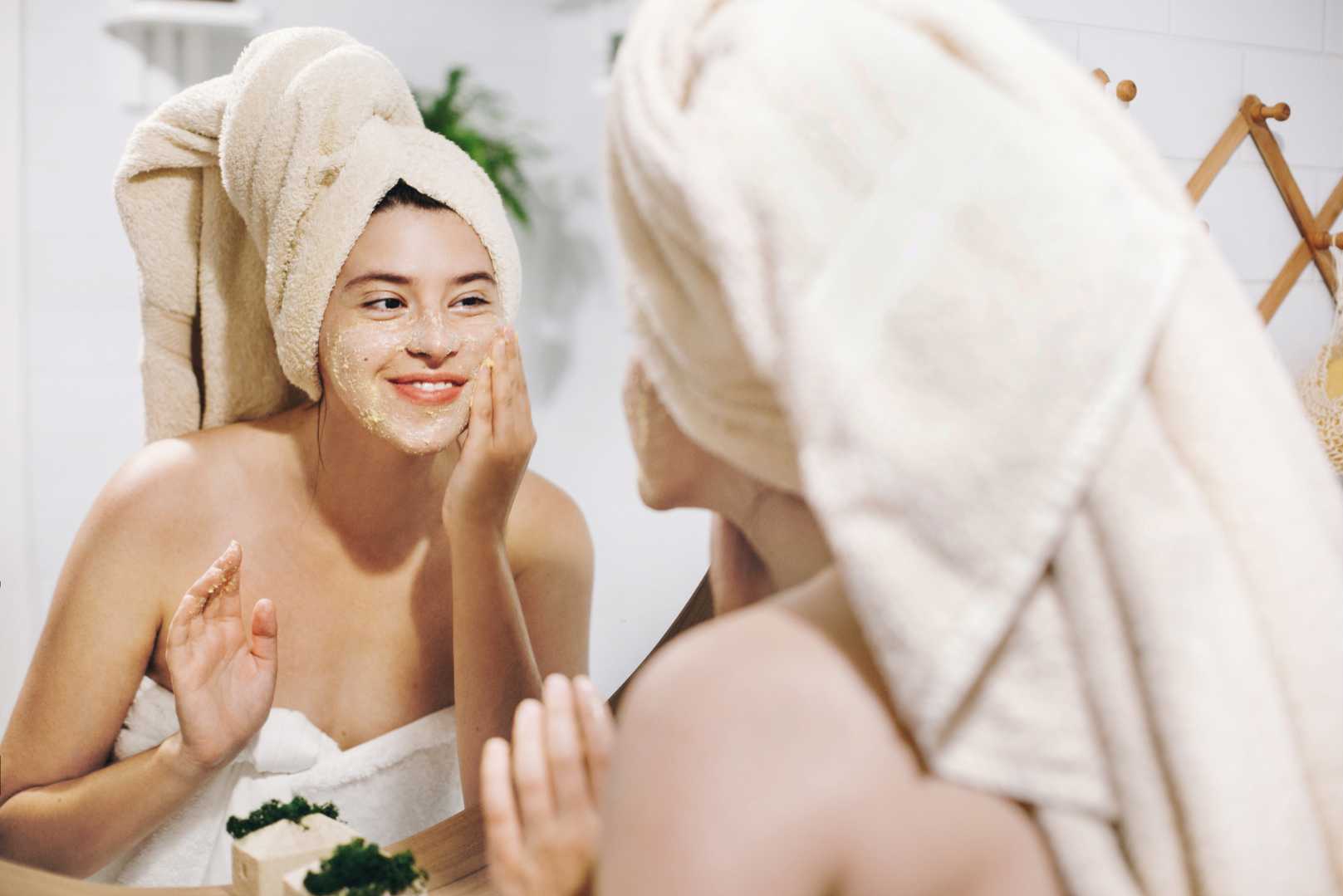

Dry, dead skin on your face can be irritating and uncomfortable. Not to mention, it makes applying makeup a nightmare. Although dry and dead skin on your face is more common during the cold months, it can occur at any time of the year, regardless of climate.
Many factors contribute to dead skin on your face, including environmental elements, not-so-great habits, and skin conditions. But luckily, there are ways to improve your skin by identifying the cause and applying the correct treatment plan. Below, find out the most effective treatments for common causes of dead skin on the face.
1. Moisturize With Hyaluronic Acid
Look for ingredients such as hyaluronic acid, which acts like a sponge to pull in hydration to the outer skin layers. Dry skin that's peeling is often genetic, so if your grandma, mom, dad, aunt, uncle, etc., suffer from dry skin too, chances are you can blame them.
If you've inherited the "dry skin" gene, you aren't alone. In fact, plenty of people aren't able to maintain adequate hydration because of this. Luckily, moisturizers can help.
Ensuring you are always properly hydrated on the inside is also important to prevent dryness and dehydration of the skin. Currently, the CDC currently recommends consuming enough water each day for overall health and that intake can vary by, age, sex, pregnancy, and breastfeeding status" while other online articles say you should aim to drink about half your weight in ounces of water each day.
2. Wash Your Face Less Frequently
Overwashing can dry out your skin, so if this sounds like something you're guilty of, try washing your face less often. That squeaky clean feeling you get after giving your face a good thorough cleansing—well, if you've been chasing after that feeling while washing your face each day, you'll probably want to stop.
That sensation is actually harmful to the skin and represents post-wash dryness. This can lead to redness, dryness, and flaking of the skin. So if you think you've been over-washing, stick to a more gentle cleanser that won’t compromise the integrity of the skin barrier.
3. Try Washing Your Face With a Dandruff Shampoo...Seriously
Washing your face with dandruff shampoo can help if the culprit for your flaky skin is perioral dermatitis. Contrary to what you might think, slathering on the moisturizer won't help if your flaky skin is due to this condition. It may, unfortunately, make things worse.
Moisturizers may actually make this condition worse because they can create an oily environment that encourages yeast growth. Instead, stick to products called zinc pyrithione, which is an ingredient that lowers levels of yeast and reduces inflammation and flaking.
But wait, use a shampoo... on your face? Yep.
Use this shampoo like a liquid cleanser for your face. Apply, lather, and rinse off after singing 'Happy Birthday' to give it enough contact time on the skin for it to do its job.
4. Look For Products With Anti-Inflammatory Benefits
Some causes of dry, flaky, dead, or otherwise uncomfortable skin on your face are due to inflammatory conditions like rosacea. Rosacea is a common condition where the skin on the face is extra sensitive and overactive to the environment. It commonly manifests as red or pink skin, redness, flaking, and bumps (or even pus pimples in some cases).
If you find that you are experiencing redness, sensitivity, and flaking simultaneously, you just might be suffering from Rosacea. In this scenario, opt to use moisturizers that contain soothing and anti-inflammatory ingredients.
5. Be Consistent With Your Skin Care Routine
Consistency can help you nail down the potential root of your skin woes. If you're experiencing flakiness and you've recently changed up your skincare routine, it's possible you might be suffering from contact dermatitis, which is a skin rash and/or peeling of the skin caused by direct contact of a product to the skin leading to either irritation or a true allergy.
If you have just introduced new products and are now struggling with flaking or peeling skin, stop using anything new, and if the rash does not improve visit your dermatologist for allergy testing.
6. Make Changes to Your Environment
When humidity drops during some parts of the year or due to controlled indoor environments, changing your air quality and humidity level can help. Even if humidity isn't a concern, changing your environment might prevent dry, dead skin on your face.
The American Academy of Dermatology Association (AAD) recommends:
- Keep your bathroom door closed
- Avoid hot water that can strip the skin, and use warm or cool water instead
- Keep showers and baths to 5 or 10 minutes long.
- Wash your face with gentle, fragrance-free cleansers only.
- Use cleanser sparingly; apply just enough to remove dirt and oil, not a thick lather.
- Avoid rubbing your skin or using an abrasive cloth; gently blot your face dry with a soft towel or microfiber cloth.
- Apply moisturizer directly after drying your skin to seal in moisture.
7. Re-Think Your Products
You might be using products that do more harm than good while not using ones that can help your skin. Often, the most common culprits for dry skin on your face include ingredients like retinoids and hydroxy acids, which can irritate sensitive skin. At the same time, preservatives and fragrances may also lead to allergies and irritation.
Instead, look for ingredients such as jojoba oil, dimethicone, glycerine, lactic acid, lanolin, mineral oil, and shea butter, which can all help seal in moisture, prevent its loss and soothe dry, dead skin on your face, according to the AAD.
For the right skin care products for your skin, no matter if it’s dry, oily, or any skin type or condition, shop Wild Naturals manuka honey skin care!


